Halloween is not only an occasion for awesome parties! The festival of terror is associated with lots of bizarre and beautiful Halloween customs .
Halloween has been celebrated in Germany for just under 20 years and is already incredibly popular with children and adults alike. The great popularity that Halloween now has with us, confirms: A scary festival of ghosts and ghouls has just been missing in this country!
But where does Halloween actually come from? I guess most of you will now say: of course from the USA! In fact, Halloween as we know it was imported from America and most Halloween customs that are known and maintained in Germany also come from there.
But the origin of the festival is in Europe – in Ireland: the Celts celebrated 4 major festivals a year, which heralded their 4 seasons. Samhain introduced the dark season and was the festival of the dead. According to the conception of the Druids – the priests of the Celts – in the night from 31 October to 1 November the floodgates opened to the Otherworld, the shadow realm, in which the dead live, as well as all kinds of mystical creatures.
Many of the old Celtic customs were simply adapted and modified after the Christianization of Europe. Samhain became 2 festivals: the ecclesiastical All Hallows’ Day, which commemorates the dead. And the night before, All Hallows’ Eve(!), from which Halloween developed, it became the custom to drive away evil spirits by having people dress up as ghosts. In this way, it was hoped that the spirits would take people for their own kind and leave them alone.
But dressing up is far from the only custom on Halloween. The festival was brought to the USA by Irish immigrants and spread from there all over the world, where it is partly mixed again with native traditions. So today there are Irish, American, German and even Mexican Halloween customs! Here we present some of the most beautiful, whimsical and crazy Halloween customs, some of which are worth imitating 😉
At Greatime you’ll find many more Halloween ideas: from original Halloween games for adults, scary costumes and DIY decorations for Halloween.
13 Halloween customs worth trying
Celtic-Irish Halloween Customs
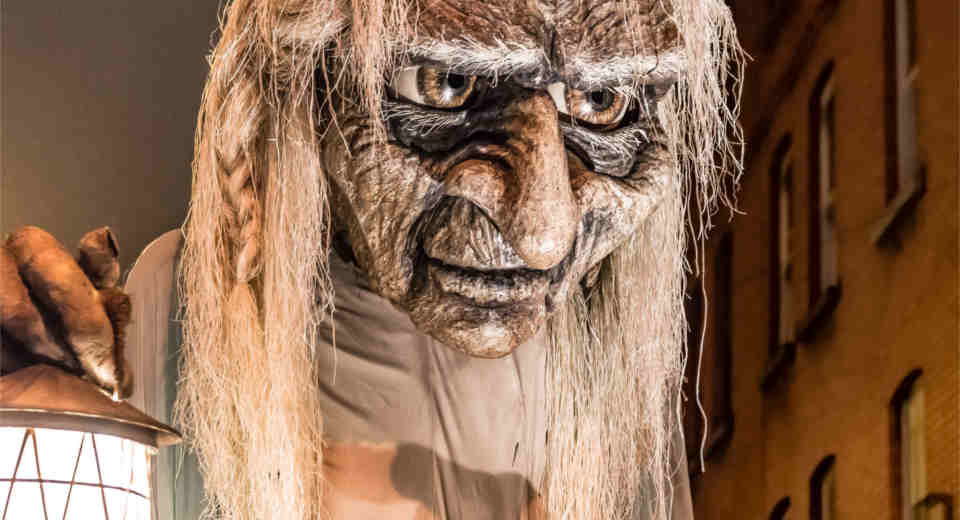
Bonfire
The ancient Celts were convinced that evil spirits feared one thing above all: fire! Accordingly, they lit huge fires on hills and mounds around which they danced and celebrated masked as ghosts.
Snap Apple – Traditional Apple Snapping
Apple Bobbing or Snap Apple is one of the most popular Halloween customs in Anglo-Saxon countries. To do this, people fill a large bowl with water and float apples in it. Players must now bend over it and grab one of the apples with their mouths and lift it out while having their hands tied behind their backs. In the past, the game was held as a real competition, because it was believed that whoever could grab an apple first would be the first to find his great love.
Jack O’ Lantern and the jack-o’-lanterns
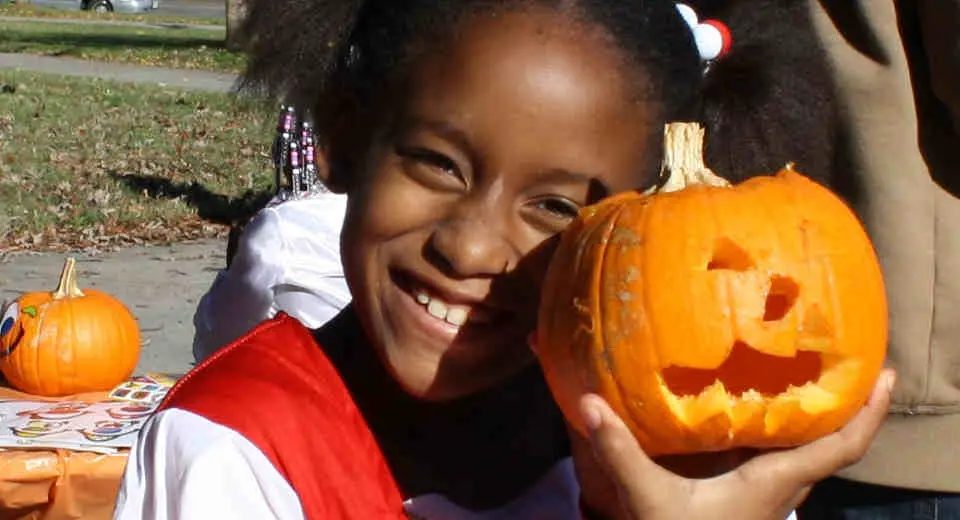
A hollowed-out pumpkin with a face is probably the most iconic motif for Halloween. The custom of carving demonic grimaces into turnips or pumpkins on Halloween and using them as lanterns goes back to the Irish legend of Jack O’ Lantern.
Jack Oldfield, according to legend, was a stingy blacksmith and thief who even tricked the devil and temporarily imprisoned him when he came for him. He released the devil only after he promised Jack never to take him to hell. But since Jack was far too sinful, when he died, he was also denied access to heaven. So his soul had nowhere to go and was condemned to wander restlessly on earth. In mockery, the devil threw him a glowing coal from hell that never goes out. Jack hollowed out a turnip, placed the coal in it and has been wandering the earth with this lantern ever since.
In the British Isles, this developed into the custom of setting up turnip lanterns for Halloween with hideous grimaces to scare off other ghosts. In America, this was then done with pumpkins, which were easier to get there. Today it is also very popular to hold pumpkin carving contests.
Trick or Treat
Probably the most famous American custom on Halloween is to go from door to door in disguise begging for candy and threatening pranks if they don’t get anything. Today it is mainly children who do this. But originally it was poor people who went from house to house on the eve of All Saints’ Day asking for a mild gift or something to eat. In Ireland and the USA it has parallel to the child custom Trick or Treat as tradition received on Halloween something for charitable purposes to donate.
Hop-Tu-Naa – How the Isle of Man celebrates Halloween
On the Isle of Man in the Irish Ocean, Halloween is called Hop-Tu-Naa and is celebrated according to the Celtic calendar as an actual New Year. Here, too, it is customary for children to dress up and parade through the streets. However, they do not simply trick-or-treat, as in America, but walk around with turnip lanterns and sing typical Hop-Tu-Naa songs at every front door in Manx, the old Celtic language of the island. Thus, this custom is strongly reminiscent of St. Martin’s caroling in Germany on November 11.
Halloween Oracle
On the Isle of Man, but also in the other Celtic-influenced countries such as Ireland and Scotland, there are many Halloween customs that serve to predict the future. This also reflects the role of the festival as a Celtic New Year.
On Man, traditionally, the hearth or fireplace is put out last thing in the night. Then one tries to discover a footprint in the ashes – if the foot points in the direction of the front door, it is a bad omen: someone in this house will die in the new year. But if the footprint points inside, it augurs the birth of a child.
Many Halloween oracles revolve around the question of who will marry next. In Ireland, a special fruitcake is baked for Halloween and a ring is placed in the dough. Whoever catches the piece with the ring will be married very soon!
The nut oracle
Another oracle popular for Halloween, especially in Scotland and northern England, is the nut oracle. In some areas, Halloween is even known as Nut Crack Night. The custom involves a young man labeling several nuts with the names of the (naturally numerous) women being considered as brides. He then throws the nuts into the fire. The nut that burns brightest and bursts open in the fire reveals who is the right one for him. Of course, the nut oracle also works with the genders reversed.
For already existing couples there is also a variant of the oracle: both put one nut each into the fire. Depending on whether the nuts burn slowly or explode loudly, the future of the couple is interpreted. What this means in concrete terms, you can best find out for yourself… 😉
US Halloween Customs
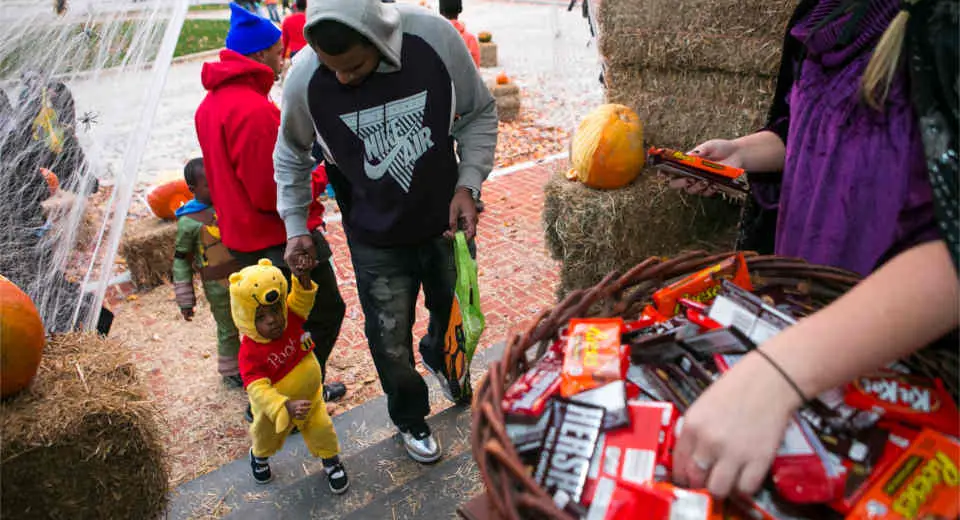
Most American Halloween customs are variations of Irish customs. For example, Americans use the iconic pumpkins for their jack-o-lanterns simply because they were much easier to get there than turnips for a long time. However, Americans have added some whimsical quirks to the celebration.
Halloween greeting cards
As crazy as it sounds, the Yanks even send greeting cards to friends and relatives on Halloween, just like we do at Christmas.
The Witches of Salem – America and the Witch Cult
While Halloween in Ireland is mainly associated with the spirits of the dead, Americans have also stylized it as the Witch Festival par excellence. Much like the German sagas surrounding Walpurgis Night, some believed that Halloween was when all the witches gathered and made mischief.
Today, of course, this is celebrated ironically: Witches are among the most popular Halloween motifs as costumes or decorations, and there are even large witch parades and witch parties. The center of this modern witch cult is, of course, Salem, Massachusetts, where the infamous witch trials took place in 1692.
Hell Houses – What Evangelical Christians Make of Halloween…
While many of the fundamentalist Christians in the U.S. condemn Halloween outright – as a pagan or even Satanic festival! – others take advantage of Halloween’s popularity as an opportunity for propaganda. Around Halloween, evangelical Christians set up so-called Hell Houses, which are supposed to make children and young people in particular afraid of hell as a kind of antidote to the diabolical Halloween.
In sometimes drastic stagings, adolescents are shown serious sins (e.g. extramarital sex, abortion, homosexuality, alcohol and drug consumption, etc.) and their supposed punishments in hell. Hell Houses are controversial even among evangelical Christians and are a bizarre anti-Halloween custom that we in Germany can well do without 😉
German Halloween customs
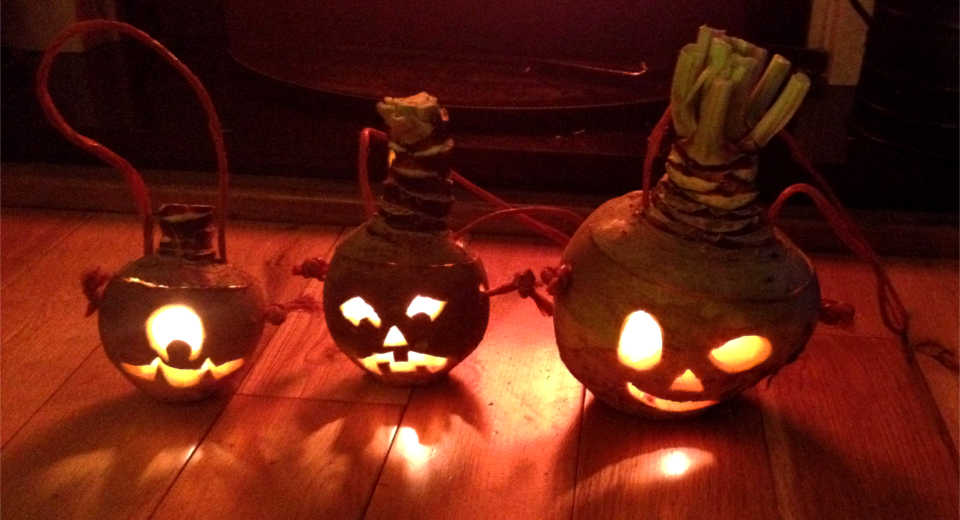
Turnip Ghosts – the German Jack o’Lantern
In some regions of Germany there is the traditional autumn custom to cut grimaces in turnips and – like the Jack o’Lantern to use as lanterns – and this was long before Hallloween was known in this country. In Bavarian Swabia and Baden-Württenberg, children head out to Riabagoaschtern – the Rübengeister. They recite sayings or short songs and ask for a gift in return. Unlike the American Trick or Treat, however, the children are not dressed up and do not play any tricks.
In Saarland, East Frisia, Thuringia and other regions of Germany, there is also the tradition of putting faces on fodder or sugar beets and parading through the village with them or placing them in the neighbors’ gardens with the request for something to snack on.
For interesting info on beet ghosting and instructions on how to make a beet ghost lantern, click here.
Día de Muertos – Mexican Halloween Customs
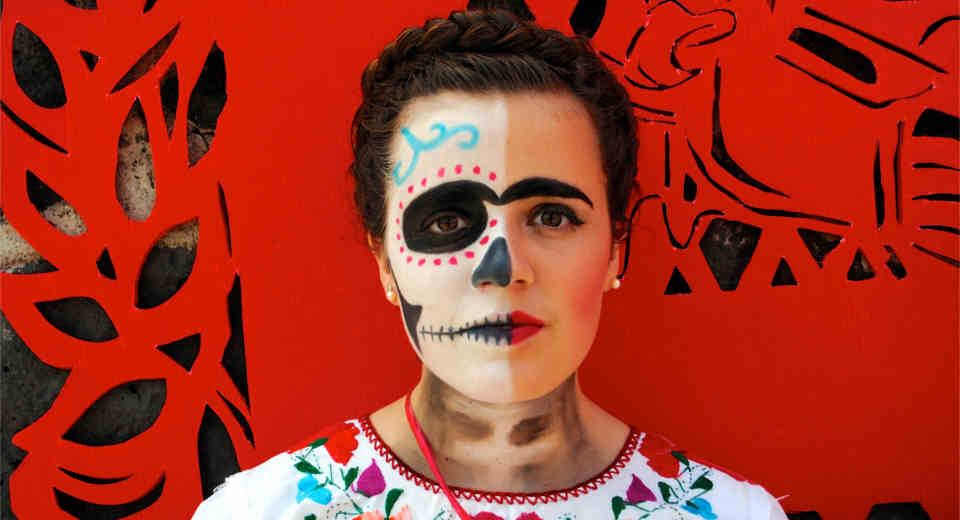
The Day of the Dead Mexican Folk Festival
The Day of the Dead – it is one of the most important Mexican holidays and is celebrated in a unique way in Mexico. On Oct. 31, the day of remembrance for the deceased, the dead come out of the afterlife and celebrate a joyous festival with the living until Nov. 2.
Death is more present than ever in the stores, the flower-lined streets that show the way for the dead to the homes of their loved ones, the cemeteries and homes – with skeletons and skulls depicting death in everyday situations. In every house and in the squares there are altars to the dead with food, drink and mementos of the dead. There the deceased strengthen themselves.
The living celebrate a lavish feast and say goodbye to the dead on November 2 in the cemetery with dancing, music and food brought along. At midnight sharp, the celebration is over – because then the dead have returned to the afterlife!
Sugar skulls and graves to snack on
Bread for the dead, skulls and graves for snacking? What sounds macabre to us is an integral part of the customs at the Mexican festival of the dead. The colorfully decorated skulls made of sugar have the name of the deceased on their forehead and bear the melodious name Calavera de Dulce.
At Greatime, you’ll find lots of brilliant Halloween party ideas for adults! Plus Halloween games for kids, Halloween games for teens, a Halloween scavenger hunt for kids and much more!
On our leisure ideas portal there are gift tips and ideas for activities with friends, with children and the partner for every season. It’s worth stopping by!
Stay up to date and follow Greatime on Facebook and Instagram!

![13 Most Beautiful And Bizarre Halloween Customs Around The World [Uber En="Halloween*customs*exist*all*over*the*world" De="Halloween-Bräuche*gibt*es*in*aller*Welt"]](https://greatime.de/wp-content/uploads/2017/10/halloween-braeuche-verkleiden.jpg)
![Uber En Quot Turnip Ghosts Quot De Quot R Bengeister Quot [Uber En="Turnip*ghosts*as*lanterns*carved*by*children*in*Germany*as*a*traditional*Halloween*custom" De="Laternen*für*Rübengeister*haben*Kinder*in*Deutschland*als*traditionellen*Halloween-Brauch*geschnitzt"]](https://greatime.de/wp-content/uploads/2017/10/halloween-braeuche-ruebengeistern-hop-tu-naan.jpg)
![Uber En Quot Halloween Party Quot De Quot Halloweenparty Quot [Uber En="10*Halloween*party*ideas*for*an*unforgettably*spooky*theme*party*on*Halloween." De="10*Halloweenparty-Ideen*für*eine*unvergesslich*gruselige*Mottoparty*an*Halloween."]](https://greatime.de/wp-content/uploads/2017/10/halloweenparty-ideen.jpg)
![Uber En Quot Halloween Card Ideas Quot De Quot Halloween Party Einladung Quot [Uber En="Six*Halloween*card*ideas*with*free*tutorials" De="Sechs*Anleitungen*zum*Halloween*Party*Einladung*selber*basteln"]](https://greatime.de/wp-content/uploads/2018/10/halloween-party-einladung-totenkopf-960x520.jpg)